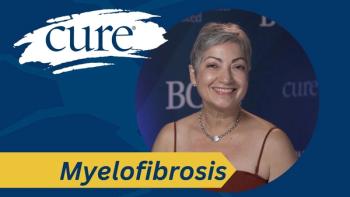
'Cutting Edge' Virus Shows Potential for Difficult-To-Treat Pediatric Gliomas
Although still in early phases, an oncolytic virus, called DNX-2401, may be a groundbreaking therapy in pediatric patients with diffuse intrinsic pontine gliomas.
A disease with a currently grim prognosis just may have a potential therapeutic option in the future, one that is already changing how these tumors are biopsied.
Diffuse intrinsic pontine gliomas (DIPG) — tumors that arise from the tissue made up of cells that help support and protect the brain's neurons – are highly-aggressive and difficult-to-treat brain tumors found at the base of the brain. These tumors are found in the brainstem, which make things even more complicated as this area, or its pons, control many of the body’s vital functions like breathing, blood pressure and heart rate.
As these tumors are typically lethal, no treatment approach is effective, as children with DIPG typically live under a year. Even worse, during that time, they endure severe side effects associated with radiation, which is the current standard of care.
“Even though there are only about 3,000 children a year with this particular disease, brain tumors are actually the leading cause of cancer death in children,” Frank Tufaro, Ph.D., CEO of DNAtrix — the virus’s manufacturer – said in an interview with CURE. “So, it is a very important pediatric indication and something for which we need new drugs.”
In comes DNX-2401 — an oncolytic virus engineered to replicate specifically in tumor cells with an abnormal retinoblastoma pathway, which infects cells through integrins (more abundant in glioma cells).
DNX-2401 is currently being evaluated in adult patients with recurrent glioblastoma. The phase 2 CAPTIVE trial is designed to evaluate the efficacy and safety of the virus in combination with Keytruda (pembrolizumab), an anti-PD-1 therapy, for the treatment of glioblastoma or gliosarcoma. Researchers have seen promising results, with improved survival among over 150 adult patients — some even living more than five years with one single injection.
Therefore, researchers were prompted to try this virus in the pediatric patient population. In a unicentric, non-randomized phase 1 study — recently presented by Sonia Tejada, M.D., Ph.D., neurosurgeon and investigator at Clínica Universidad de Navarra, at the Biennial Congress of the European Society for Pediatric Neurosurgery in Bonn, Germany on May 9 – 12 children with newly-diagnosed DIPG will receive the agent.
Overall, the researchers are looking to determine the safety and efficacy of intratumoral administration of DNX-2401. The primary objective is to confirm the safety of the target dose known from current ongoing trials of adults. Secondary endpoints include overall survival at 12 months, percentage of responses and induced immune response against tumor.
In the ongoing trial, DNX-2401 is directly injected through the cerebellar peduncle, which connect the cerebellum to the brain stem, targeting the middle of the tumor. The virus administration is done after stereotactic tumor biopsy, using the same cannular needle trajectory, after verification of catheter position with intraoperative MRI. The entire process takes about an hour, and so far, pediatric patients have been able to go home the next morning, Tufaro said.
Of note, these tumors cannot be surgically resected, and diagnosis is based on MRI. So, to be able to inject these tumors directly, and actually see the agent being administered is a big step in the right direction.
“One thing that is important to realize in this disease: Because there is no therapy besides radiation, people didn’t even want to risk doing biopsies because it is a bit of a dangerous procedure — why do a biopsy if it’s not going to change your therapy?” questioned Tufaro.
“However, in recent years, scientists and physicians want to learn more about it so that have been doing biopsies on these tumors,” he added. “So, we are taking advantage of that. We do a small biopsy, and we take this needle and we are delivering a virus. So, it is kind of very cutting edge so to speak. Five years ago, even, they wouldn’t think about touching tumors very much and now we are more confident in doing that. So, we think this is going to open up a whole new area of therapy.”
Three to four weeks following injection, patients then receive standard radiotherapy, and follow-up includes close monitoring of neurological status, blood tests and brain MRIs.
So far, only four children have been treated. However, encouraging results have been seen.
“It looks to be safe, and we have some evidence of activity in terms of response,” Tufaro said. “The jury is still out on that. It takes longer to figure that out. Pediatric patients have been given this coinciding with radiation, so you have to tease out the effect of each of them separately. But so far, it seems very positive.”
If this portion of the trial — currently in a dose escalation phase – shows evidence of safety and efficacy will propel a multicenter clinical trial. “The next step is to really try to get a sense if we are improving survival statistically. Can we glean anything from this in terms of survival and time to progression. In other words, with radiation, has the tumor shrunk, and then adding the virus to that, is that letting them live disease-free or without progression of disease for a longer time. And is their quality of life better?” he questioned.
“I think this is going to be a cutting-edge drug. Once you open the flood gates, we’ll be able to add other kinds of viruses that have even more therapeutic benefit potentially.”




